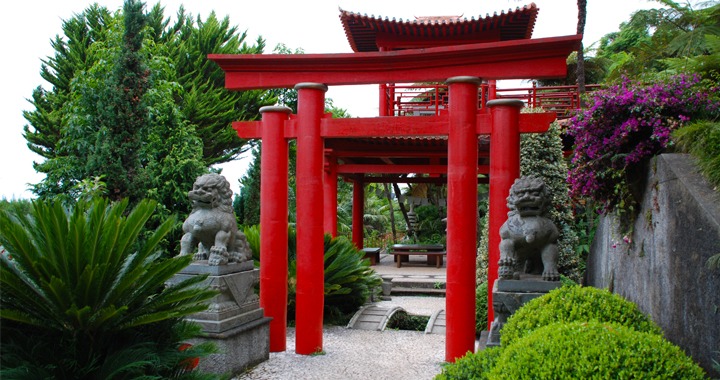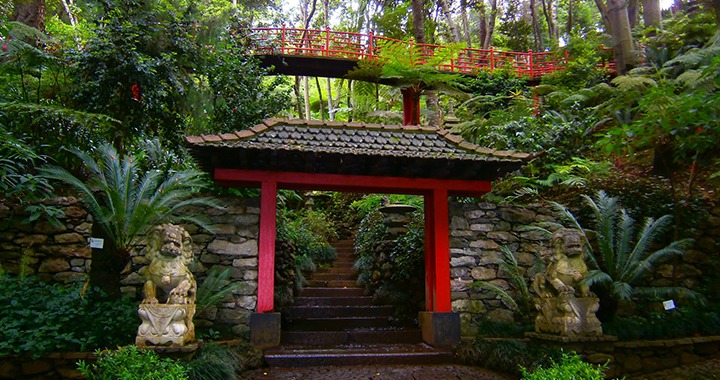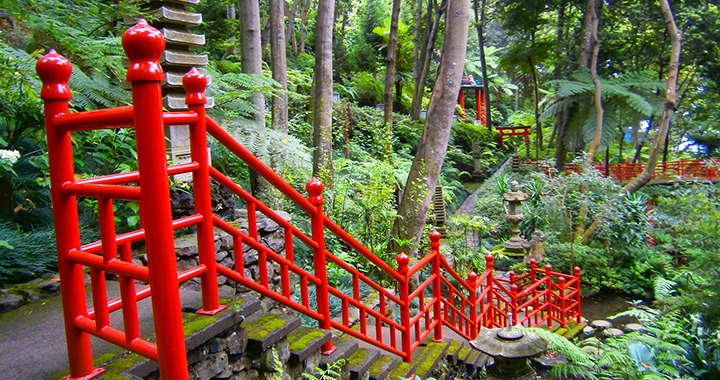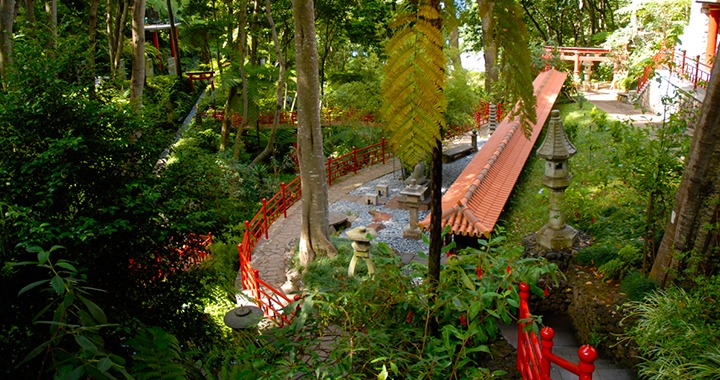Oriental Gardens
During a trip to China and Japan José Berardo became enchanted by their history, culture and way of life and by the influence of the Portuguese on the Orient over 200 years. As such, the two oriental gardens are an attempt to recreate that culture, linked to Buddhism, with its respect for Nature and its highly symbolic elements.
At the entrance to the Oriental garden in the Northern area, there are two marble Fo dogs, mythical animals from the Orient usually found at the entrance to temples, acting as guards. There is a moveable ball in their half-open mouths which, according to the Chinese belief, brings good luck to those who give it one complete turn.
The decoration is based on the oriental style, and thus various pagodas may be found, originally intended to house relics or to mark a holy places.
Apart from these, the visitor may also observe Buddhist sculptures, a dragon in marble surrounded by children representing fertility, stone seats with oriental decorations, and several lanterns, also in stone.
Water is also an important decorative feature in the form of lakes and waterfalls, with miniature islands and ornamental bridges. Next to the lakes containing Koi fish, two bamboo ornaments in the shape of pipes are to be seen. When these become filled with water and it is discharged into the lake, the resulting noise, apart from frightening away the birds, represents the passing of time.
From Asia we can find a species of cycad, Cyca revolute and in both the oriental gardens we come across various tree ferns, whose lush green vegetation contrasts with the red and black of the bridges and railings.
There are also flowering plants such as the camellia, a shrub with evergreen leaves, highly valued for the number of attractive flowers that bloom, above all, in the winter and spring.






